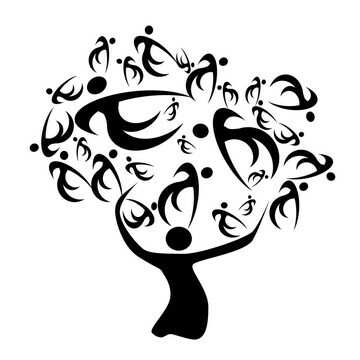Connecting on the DSR vs. on DNA Websites
By admin on March 25, 2018Ryan and I started the Donor Sibling Registry (DSR) in 2000, via Yahoo Groups — one of the earliest social media-type applications. Our group was based on the idea that Ryan’s donor had signed up for anonymity (and Ryan respected that fact), but he was curious to know if his donor might have had a change of heart about being known. Also, he wondered if he had any half-siblings out there: people with whom he shared half of his genetics. The concept of mutual consent contact was very important to us both, because we didn’t want to “out” anyone; we only wanted to create a platform where mutually desired contact could take place. As a young child (then 10), Ryan had been thinking about half-siblings and his biological father in this way: “What if they want to know me, and I want to know them — how will we ever have the opportunity to find each other?”
Fast forward to 2004: When a DNA testing company contacted us, asking if Ryan would like to test his DNA to possibly find out more about his ancestry and his paternal countries of origin, we jumped at the opportunity. We both felt that any information that a DNA test could provide about Ryan’s ancestry would be welcomed. Neither of us, nor the DNA company, ever entertained the idea that Ryan’s biological father might be found using this new genetic testing technology.
At first, the DNA test did provide some interesting information about where Ryan’s paternal ancestors hailed from. He thought that was cool, and we both thought that was the end of it. Nine months later, though, we were shocked to receive notification that Ryan had matched with two very distant relatives. It was with the last name of these two Y-DNA connections, a public records search, and Google, that in a very short period of time lead us to Ryan’s biological father.
The irony didn’t escape us — here were the two founders of a mutual consent contact organization for connecting donor-conceived people with their first- or second-degree genetic relatives, and now we had, almost by accident, tracked down my son’s biological father — a guy who had not signed up for any type of contact. Ryan had become the first donor-conceived person to locate his donor via DNA testing. He might have been the first, but definitely not the last, as he opened a door that could never be closed again.
Since then, we’ve been sending DSR members to DNA testing both to confirm relatedness with possible relatives found on the DSR and to supplement their search for their biological parents. This is particularly common for those without the luxury of a donor number, many of whom were born between the 1940s and 1980s.

More recently, adult donor-conceived people, many of whom had no idea of this fact until they swabbed their own cheeks, are coming to our website from the other direction, from the DNA testing sites to the DSR to make their connections after finding out the very surprising news that one of the parents who raised them wasn’t in fact biologically related to them. Many who were unaware (including several half-siblings of Ryan’s) are doing DNA testing for a variety of reasons: family tree curiosity, it was a gift, for medical reasons, a passion for genealogy, they suspect there’s a secret, looking for someone else in particular, etc. The level of shock, disbelief, surprise, curiosity, and confusion varies among these people who most often had no idea about their donor conception.
It’s now very common for DNA testing to provide first- and second-degree genetic relatives, and these results are exposing long-held family secrets. These secrets don’t just affect one person, but rather, can affect entire families. Parents who thought they’d keep the secret of using a donor are now being confronted by children who wonder why their parents were not truthful with them. For Ryan’s half-siblings who do not yet know the methodology of their conception (there are a few), we feel that it’s only a matter of time until they too make their way into the CCB 1058 half-sibling family which is now at fourteen.
Establishing new friendships and familial relationships via DNA, with people who aren’t necessarily prepared for this type of new-relative connection, can be a very different experience than making deliberate mutual consent contact on the DSR. For the most part, people who connect via the DSR are delighted to connect with each other. On the other hand, connecting via DNA can be so shocking that some people are just not prepared to even reply to messages from their new-found relatives on the DNA websites. For those waiting for a reply that never comes, this can be difficult.
People add postings on the DSR for a variety of reasons, and the level of desired contact can certainly vary. We have thousands of members longing to establish relationships with their own or their child’s half-siblings, offspring hoping to find their biological parents, and donors hoping to connect with their biological children. Some members only want to connect to share and update medical information. And many land somewhere in between — uncertain as to what type of contact and relationships they’re looking to establish, but willing to explore the possibilities.
While the level of desired contact might vary, by searching on the DSR you can be assured that any results you’re provided come with the certainty and confirmation that the person you’re connecting with will not be shocked by the news that they are donor-conceived, and chances are, they’ll most likely be thrilled to have made the connection.
Here is a related article from this week’s Philly Inquirer:


 Browse by Clinic
Browse by Clinic
 Become a Member
Become a Member